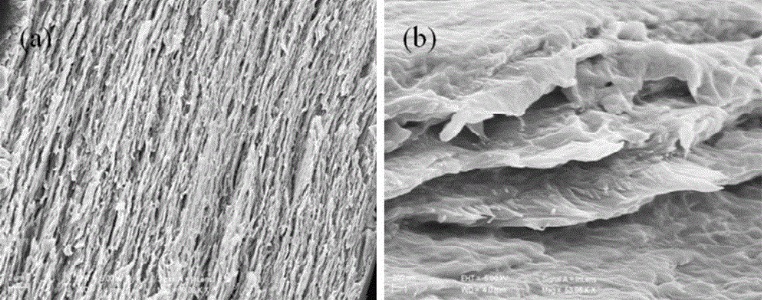On November 3, Hay Think witnessed the successful roll-off of graphene carbon-aluminum alloy from the production line at the production site of SHXT Metal Matrix Composite Technology Co., which marked the great success of the pilot test of this metal matrix composite material. Starting from bionics, it successfully solved the structural problems of graphene alloys and replaced traditional aluminum alloys, helping China's high-end manufacturing fields such as aviation, high-speed rail, and automobiles enter the lightweight era.
Not only that, as China's graphene industry technology functional platform launched the first competitive product, this has just begun. With the addition of powder metallurgy and graphene, breakthroughs in new materials are not easy, so what is the magic of this new material? What kind of pattern will it bring to China's high-end manufacturing?
Adding graphene to achieve high-performance aluminum alloys, domestically produced large airplanes, high-speed rail speeds, and automobile lightweight rely on it
Recently, with the first dynamic flight demonstration of the domestically-made large aircraft C919, people can finally see on the ground that the domestically-made aircraft has turned from an ideal to a reality, and also saw the continuous progress and surpassing strength of China's high-end manufacturing industry. For domestic commercial aircraft, it is the dream of several generations of scientists for many years to seek the localization of core components such as aero engines and control systems on the one hand, and on the other hand to start with new materials and new processes to complete the domestic production of the source of manufacturing.
Lightweight commercial aircraft and high-speed rail have become the inevitable development direction of high-end manufacturing.
The domestic C919 uses aluminum-lithium alloy to reduce the weight of the body, accounting for 7.4% of its structure. But light is not enough. If the stiffness problem cannot be solved, we can only stop there. Therefore, how to solve the rigidity problem of aluminum alloy has become the biggest problem in the lightweight of large equipment.
The industry usually supplements strength by adding various materials, such as adding aggregate to concrete. In the field of aluminum alloys, aluminum-lithium alloys and aluminum-ceramic alloys are the development directions, and the addition of new reinforcing phases such as carbon nanotubes and graphene to form aluminum-based composite materials is generally optimistic.
Professor Zhang Di from the School of Materials Science and Engineering of Shanghai Jiaotong University said that carbon nanotubes and graphene have excellent mechanical properties. Their density is only 1/6 that of steel, but their strength is more than 100 times that of steel. The stiffness is the hardest natural diamond in nature. Close. As long as a small amount of carbon nanotubes and graphene are uniformly dispersed in the aluminum alloy matrix, they can partially replace the expensive alloy elements, and can greatly improve the mechanical properties such as strength and rigidity of the aluminum alloy while maintaining the good processing properties of the aluminum alloy. .
Although the directional technology is optimistic about the prospects, this technical route has not seen progress today. The reason is that how to put graphene and carbon nanotubes into aluminum alloy has become the biggest problem. Although powder metallurgy technology has developed rapidly, it has been able to successfully solve the problem of alloy manufacturing. It is possible to use pure metals or other alloys, non-metals, metal and non-metal compounds, and various other compounds to finally produce alloy blanks, but if you want to make breakthroughs, you must work hard on how to add them.
Looking for a solution from the natural world, the scientific problem was finally solved, and the "micro-nano laminated powder metallurgy" was successfully launched
In fact, as early as the end of the 20th century, Japanese scientists were already exploring carbon nanotube-reinforced aluminum-based composite materials technology, but the bottleneck encountered could not be broken.
Zhang Di said: "The diameter of carbon nanotubes is less than one-thousandth of a human hair, and the thickness of graphene is less than one-100,000th of a human hair. It is necessary to disperse them one by one in the aluminum alloy. It is really difficult not to be damaged."
This problem also plagued Chinese scientists. Finally, when they saw the laminated structure of a shell "mother-of-pearl", the wisdom of nature successfully inspired new thinking among researchers. Finally, with the support of bionic composite technology, the original metallurgical technology of "micro-nano laminated powder metallurgy" was developed.

The principle is to first make aluminum into micro-nano flake powder, and then uniformly compound with carbon nanotubes and graphene in a certain proportion to form a "brick" at a microscopic scale. Then, through process control, the "brick" is formed like a barrier. Masonry" laminated structure of carbon-aluminum-based composite material.
In order to transform this technological achievement into physical production, the scientific research team continued to practice, after more than 700 days and nights, finally successfully completed the first batch of large-scale carbon aluminum alloy ingot production in April 2019, and successfully completed it in October this year. The pilot test means that the carbon-aluminum-based composite material can quickly enter the mass production stage.

